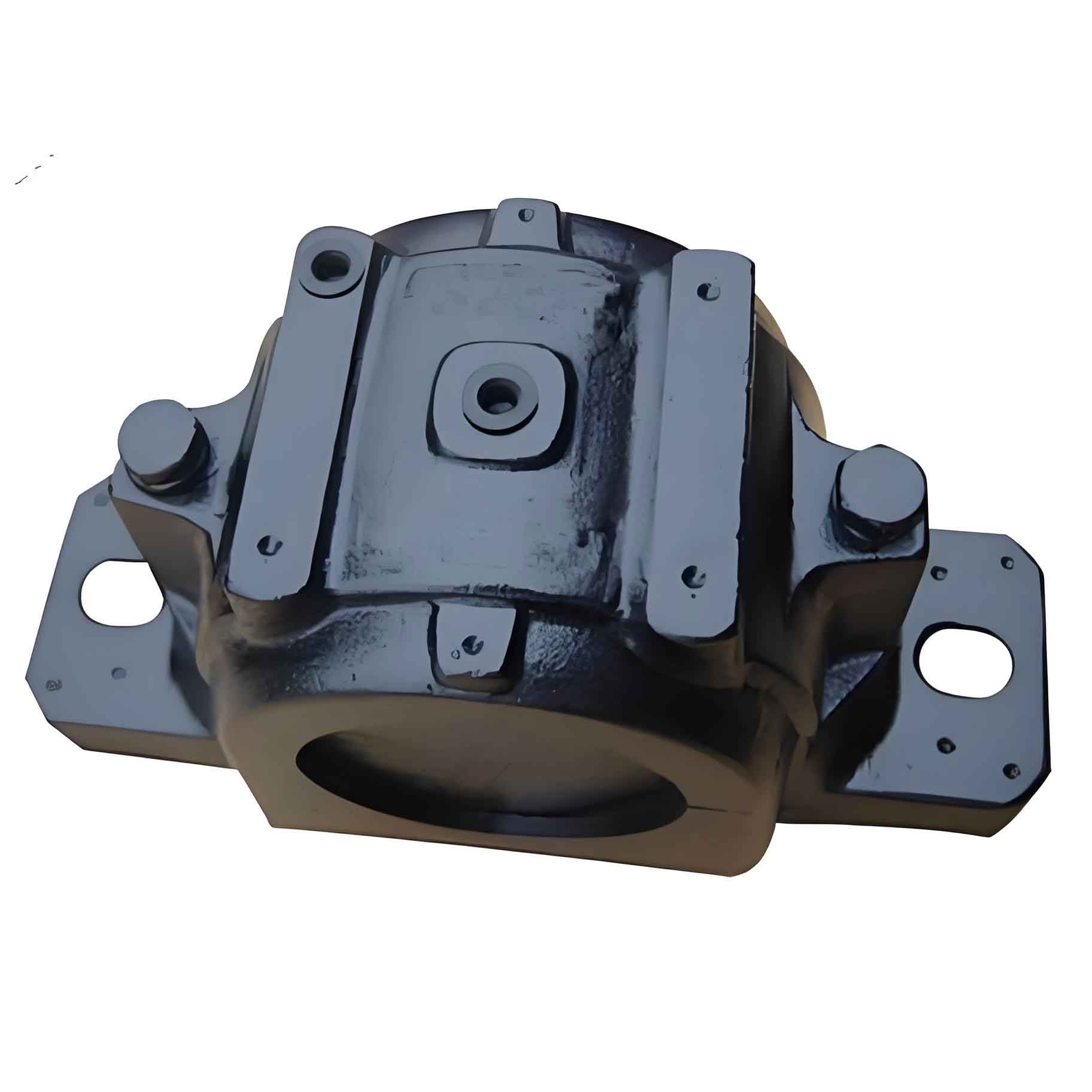The tractor casting industry faces significant challenges in producing defect-free axle housings, particularly with shrinkage porosity and cavity defects exceeding 70% in traditional processes. This study addresses these issues through a systematic optimization of sand casting for ZG40Mn steel axle housings, combining numerical simulation with experimental validation. By designing three gating systems and implementing targeted solidification control measures, we achieved a 97% reduction in leakage failures.

Structural Analysis and Process Parameters
Disconnected axle housings (452 mm × 340 mm × 396 mm) exhibit wall thickness variations (15–29 mm) that create thermal hotspots. Critical parameters were established through metallurgical analysis:
| Parameter | Value | Standard |
|---|---|---|
| Material | ZG40Mn | GB/T 11352 |
| Pouring Temperature | 1580°C | Thermal analysis |
| Linear Shrinkage | 2% | GB6414-1999 |
| Draft Angle | 3° | Sand casting norms |
The optimal pouring position minimizes turbulence while ensuring critical surfaces solidify directionally. The minimum static pressure head prevents misruns:
$$ h_M = L \tan \alpha $$
where \( L = 320 \, \text{mm} \) (metal flow distance) and \( \alpha = 10^\circ \) (pressure angle), yielding \( h_M = 246 \, \text{mm} \).
Gating System Design and Simulation
Three gating systems were designed using the pouring velocity method (\( G_L = 117 \, \text{kg} \), \( t = 10 \, \text{s} \)):
$$ A_{\text{choke}} = \frac{G_L}{k S’ t} $$
where \( k = 0.6 \, \text{kg}/(\text{cm}^2 \cdot \text{s}) \) (pouring ratio) and \( S’ = 0.8 \) (flow coefficient). The cross-sectional area ratios are:
| System Type | \( \Sigma A_{\text{inner}} : \Sigma A_{\text{runner}} : \Sigma A_{\text{sprue}} \) | Cross-section (cm²) |
|---|---|---|
| Closed | 1 : 1.3 : 1.5 | 22.5 : 29.25 : 33.75 |
| Open | 1.2 : 1.1 : 1 | 22.5 : 21 : 18.8 |
| Semi-closed | 1 : 0.8 : 1.2 | 22.5 : 18 : 27 |
ProCAST simulations revealed critical differences in tractor casting performance:
| Performance Metric | Closed System | Open System | Semi-closed |
|---|---|---|---|
| Filling Stability | Moderate splashing | Severe turbulence | Laminar flow |
| Final Solid Fraction | 86.6% | 92.6% | 82.7% |
| Shrinkage Severity | High in bore | Extreme in hubs | Minimal |
The semi-closed system demonstrated superior thermal management, with solidification sequences preventing isolated liquid zones.
Optimization with Riser and Chill Design
Supplemental measures eliminated residual shrinkage in semi-closed tractor casting:
- Risers: Blind riser at ingate (\( \varnothing 80 \, \text{mm}, H = 150 \, \text{mm} \)) and top riser ensure feeding:
$$ M_{\text{riser}} = 18.75 \, \text{mm} > M_{\text{casting}} = 9.7 \, \text{mm} $$ - Chills: Six internal steel chills (30 × 50 × 60 mm) accelerate solidification at thermal centers:
$$ Q_{\text{extracted}} = \rho c_p \Delta T V_{\text{chill}} $$
Final defect distribution after optimization:
| System | Axle Body Defects | Riser Defects |
|---|---|---|
| Closed + Riser/Chills | Significant porosity | Moderate |
| Semi-closed + Riser/Chills | Near zero | Controlled |
Experimental Validation
30 castings produced with optimized semi-closed tractor casting parameters underwent testing:
- Sectioning: No voids > 3 mm detected at former defect locations
- Air Tightness: 0 leaks at 0.5 MPa (10 min dwell), achieving 97% production yield
Field deployment in 6,000+ units confirmed failure rates below 3%, validating the simulation-driven approach for sustainable tractor casting production.
